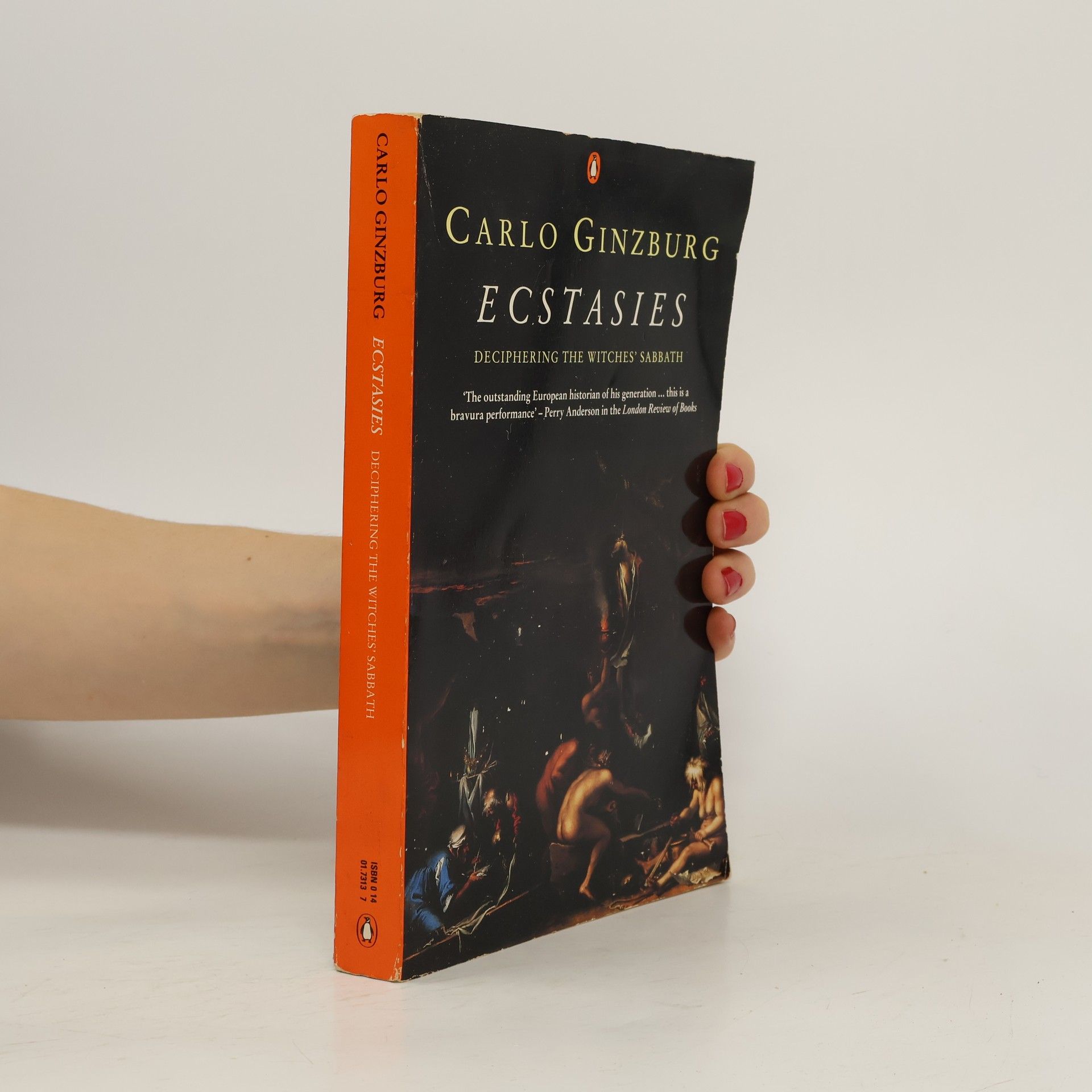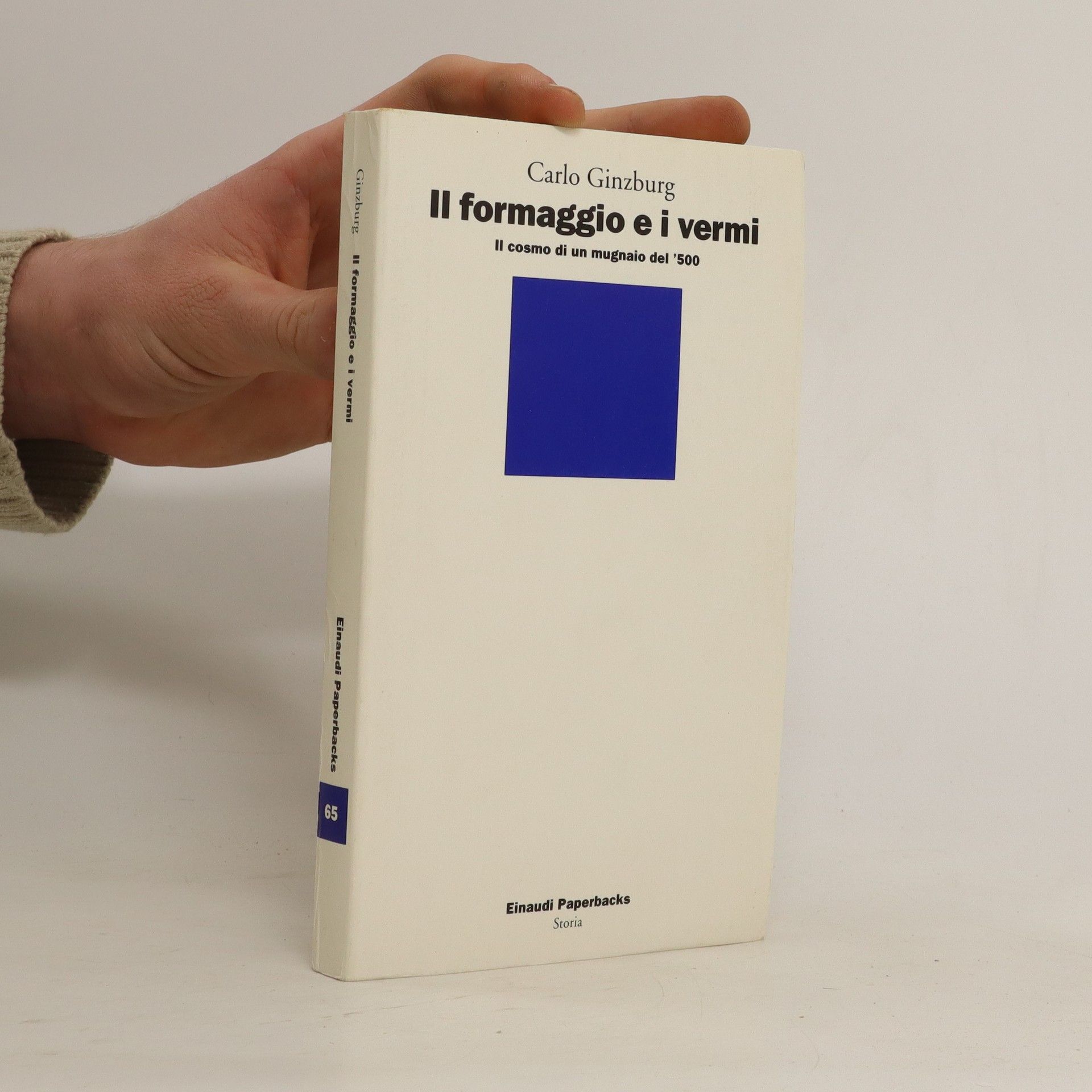Carlo Ginzburg Libri
Uno storico italiano i cui interessi spaziano dal Rinascimento italiano alla storia europea moderna. I suoi contributi si estendono anche alla storia dell'arte, agli studi letterari, alle credenze culturali popolari e alla teoria della storiografia. Si accosta alla storia con un occhio attento all'interconnessione di diversi campi, esplorando i contesti culturali e intellettuali che plasmano gli eventi.







Ecstasies
- 368pagine
- 13 ore di lettura
For centuries witches on trial admitted to taking part in "sabbaths" where they cast spells, enacted obscenely blasphemous rites and even devoured corpses. Many scholars believe that such confessions were just a reflection of their persecutors' fantasies. This book investigates.
Fear Reverence Terror
- 208pagine
- 8 ore di lettura
The book features a preface and the third chapter that have been translated from Italian by Anne C. Tedeschi and John Tedeschi. This translation offers readers insight into the original text, capturing the nuances and cultural context of the Italian language, enriching the overall understanding of the work. The translators' expertise ensures that the essence and style of the original prose are preserved, making it accessible to a wider audience.
The Night Battles (RLE Witchcraft)
Witchcraft and Agrarian Cults in the Sixteenth and Seventeenth Centuries
- 234pagine
- 9 ore di lettura
The book explores the manipulation of witchcraft perceptions by Inquisitors and their spread across Europe and the New World. It delves into the fragmented testimonies of peasants, providing insight into popular beliefs and the peasant mindset of that era. Ginzburg's analysis highlights how these beliefs served as crucial evidence for understanding the socio-cultural context of witchcraft and its impact on society.
The Judge and the Historian: Marginal Notes on a Late-Twentieth-Century Miscarriage of Justice
- 224pagine
- 8 ore di lettura
Through the lens of sixteenth- and seventeenth-century witchcraft trials, Carlo Ginzburg critiques the flawed case against Adriano Sofri, a prominent figure in the Italian Left. He emphasizes the necessity of intellectual rigor and passion in confronting the political opportunism and dishonesty that characterized the late twentieth century. Ginzburg's exploration reveals the interplay between historical analysis and contemporary political discourse, shedding light on the complexities of justice and ideology.
The Enigma of Piero: Piero della Francesca
- 272pagine
- 10 ore di lettura
This new edition offers a vivid portrayal of Piero della Francesca, highlighting his artistic genius and contributions to the Renaissance. It delves into his unique techniques, use of perspective, and the emotional depth of his works. The book provides insights into his life, influences, and the historical context in which he created his masterpieces, making it a valuable resource for art enthusiasts and historians alike.
Was he influenced by the environment, he asks himself, and if so, how? Ginzburg uses his own experience to examine the elusive and constantly evolving nature of history and historical research.
Calculus
- 480pagine
- 17 ore di lettura
This text helps students improve their understanding and problem-solving skills in analysis, analytic geometry, and higher algebra. Over 1,200 problems, with hints and complete solutions. Topics include sequences, functions of a single variable, limit of a function, differential calculus for functions of a single variable, the differential, indefinite and definite integrals, more. 1963 edition.
The Night Battles
- 240pagine
- 9 ore di lettura
In his new preface, Ginzburg reflects on the interplay of chance and discovery, as well as on the relationship between anomalous cases and historical generalizations.
Old Thiess, a Livonian Werewolf
- 272pagine
- 10 ore di lettura
In 1691, a Livonian peasant known as Old Thiess boldly announced before a district court that he was a werewolf. Yet far from being a diabolical monster, he insisted, he was one of the “hounds of God,” fierce guardians who battled sorcerers, witches, and even Satan to protect the fields, flocks, and humanity—a baffling claim that attracted the notice of the judges then and still commands attention from historians today. In this book, eminent scholars Carlo Ginzburg and Bruce Lincoln offer a uniquely comparative look at the trial and startling testimony of Old Thiess. They present the first English translation of the trial transcript, in which the man’s own voice can be heard, before turning to subsequent analyses of the event, which range from efforts to connect Old Thiess to shamanistic practices to the argument that he was reacting against cruel stereotypes of the “Livonian werewolf” a Germanic elite used to justify their rule over the Baltic peasantry. As Ginzburg and Lincoln debate their own and others’ perspectives, they also reflect on broader issues of historical theory, method, and politics. Part source text of the trial, part discussion of historians’ thoughts on the case, and part dialogue over the merits and perils of their different methodological approaches, Old Thiess, a Livonian Werewolf opens up fresh insight into a remarkable historical occurrence and, through it, the very discipline of history itself.